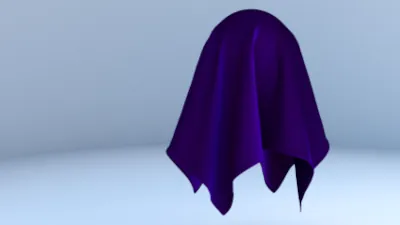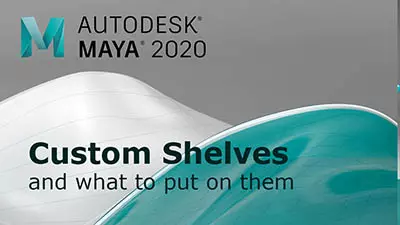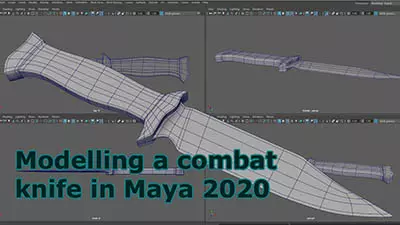Maya for 3D Printing - Rapid Prototyping
In this course we're going to look at something a little different, creating technically accurate 3D printed parts.
#
1
29-06-2007
, 12:00 PM
Registered User
Join Date: Mar 2007
Join Date: Mar 2007
Posts: 1,055
Maintaining quads / adding geometry for more detail question
I'm in the process of modeling a head and am trying to maintain quads. I'm finding this a little difficult.
On the image of the eye below, you can see how I've tried to build quads on the outer edge of the eye, though it is not succesful. I am still wondering how to do it on the inside edge of the eye. I could create new edge loops all the way around but would like to avoid this.
Are there any techniques anyone could recommend for maintaining quads, especially between areas of greater and less detail? I guess it is common to have detailed areas, and not have all the line on them be edge loops around the whole object.
Thanks in advance,
gubar.
#
2
30-06-2007
, 01:44 PM
I recomend that you look at other peoples topology, copy then after a while you learn how to more succesfully make quads.
Good luck.

#
3
01-07-2007
, 01:31 AM
Registered User
Join Date: Mar 2007
Join Date: Mar 2007
Posts: 1,055
Yeah, going to start looking at other people's meshs. I'm sure I seen a guide once a while ago, can't remember where, that gave techniques on how to break meshs down into more detail but still maintain quads, without adding edge loops.
If I can dig it out I'll post it's name/link up here.
cheers,
gubar.
#
4
06-07-2007
, 09:43 AM
Registered User
Join Date: Aug 2004
Join Date: Aug 2004
Posts: 408
Sure they smooth better than triangles and n-sideds... but it will smooth a lot worse if the vertexes aren't even in the right places.
If you need to make triangles to get proper topology... do it IMO. Topology is the only thing people sees, not wireframe.
Its like the old polycount adage -- what's the better sphere? A 60-poly sphere, or a 500-poly banana...?
#
5
06-07-2007
, 01:05 PM
Registered User
Join Date: Mar 2007
Join Date: Mar 2007
Posts: 1,055
that was my initial thought. It's just that I've read some tutorials that stress the importance of this. I have found some info re how to maintain quads without adding too much extra geometry - I'll try and post up some images later.
thanks,
gubar.
#
6
07-07-2007
, 03:38 AM
Here's some quick examples when you should avoid tri's:
If you want to take the model into ZBrush.
If you plan to animate the character (tri's can be used but best be hidden in areas that does not deform and preferrably where it's not seen (inside nose, mouth, eye sockets)
Triangles can create uggly pole's on a mesh, but does not necessarily have to. Most game models are triangulated etc. This is another several chapters long topic.
If you are planning to convert the model into different formats, or go between nurbs,poly's, sub-divisions).
Again with reservation. Some convertions works just fine with tri's.
When to use tri's:
If it's a still image and it's not visible in the result, use as many tri's you want.
If the faces they make up are somewhat planar and does not deform at all.
If they are temporary geometry that you will later fix. There's no reason to keep a triangle that could be made into a quad, but they can be useful in the modeling process temporarily. Many prefer to kill the last 3-4 tri's at the end of the modeling stage when all geometry and loops are in place, and you have the flow that you want. Again if it's not easy to kill, hide it if you can.
Here's a way you can go from areas of higher resolution (more faces) to a lower resolution.
Last edited by AlphaFlyte; 07-07-2007 at 04:17 AM.
#
7
07-07-2007
, 03:45 AM
Last edited by AlphaFlyte; 07-07-2007 at 04:10 AM.
#
8
07-07-2007
, 01:32 PM
Registered User
Join Date: Mar 2007
Join Date: Mar 2007
Posts: 1,055
the last one you show - the T-Split - is the one that I had read about. I hadn't seen the first one before, so thanks for sharing it.
I'm having trouble mirroring/duplicating geometry and am going to start a new thread - if you can help there that would be great too.
thanks again,
gubar
#
9
07-07-2007
, 05:04 PM
#
10
07-07-2007
, 06:46 PM
Subscriber
Join Date: Feb 2006
Join Date: Feb 2006
Posts: 1,937
Merge the two vertices which are marked red


#
11
07-07-2007
, 07:10 PM
Registered User
Join Date: Mar 2007
Join Date: Mar 2007
Posts: 1,055
cheers,
gubar
Posting Rules Forum Rules
Similar Threads
Kind of a dumb Geometry question
by ChadJKosch in forum Maya Basics & Newbie Lounge replies 2 on 03-03-2016
Adding thickness problem -good practice question
by Artheus in forum Maya Modeling replies 2 on 18-03-2015
Newbie question: adding a back view
by F50-GT in forum Maya Basics & Newbie Lounge replies 5 on 17-09-2013
Adding geometry
by Sircharles in forum Maya Basics & Newbie Lounge replies 14 on 07-05-2011
Adding Geometry to a Nurbs Object
by benny_boi in forum Maya Basics & Newbie Lounge replies 2 on 24-10-2009
Topics
Free Courses
Full Courses
VFX News
How computer animation was used 30 years ago to make a Roger Rabbit short
On 2022-07-18 14:30:13
Sneak peek at Houdini 19.5
On 2022-07-18 14:17:59
VFX Breakdown The Man Who Fell To Earth
On 2022-07-15 13:14:36
Resident Evil - Teaser Trailer
On 2022-05-13 13:52:25
New cloud modeling nodes for Bifrost
On 2022-05-02 20:24:13
MPC Showreel 2022
On 2022-04-13 16:02:13









